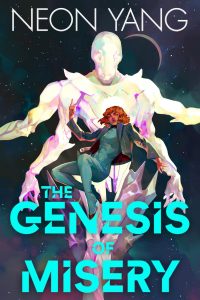Gary K. Wolfe Reviews The Adventurists by Richard Butner
 The Adventurists, Richard Butner (Small Beer 9781618731944, $17.99, 312pp, tp) March 2022.
The Adventurists, Richard Butner (Small Beer 9781618731944, $17.99, 312pp, tp) March 2022.
Here’s a good example of the value of a well-curated small press. To the best of my knowledge, I’d never read a word of fiction by Richard Butner, though I recognized the name as one mentioned respectfully by some of the attendees at the fabled Sycamore Hill Writers’ Workshop, which he’s been directing for several years. But a story collection from Small Beer is almost certainly worth checking out, even from an unfamiliar author, and I’ve yet to be disappointed. The Adventurists is Butner’s first collection (except for a 2004 chapbook also published by Small Beer), and ten of the 16 stories haven’t been published before at all. It turns out that Butner’s stories are wonderfully insidious in a number of ways. He seldom works beyond traditional short story lengths, and the stories tend to be constructed in ways that first seem conventional, with conventional concerns: trying to recapture the past or reconnect with old friends, visiting sideshows and fairs, surviving in anonymous corporations, exploring a spooky old house. Butner also brings along some familiar furniture of fantastika, like magic portals, timeslips, and ghosts. But – more through the accumulation of sinister anomalies than through dramatic plot twists – we watch the world of the tale grow estranged around us. Even the order of the stories in the collection tends to do this, shifting gradually from the almost-mimetic into SF, fantasy, and surrealism.
For example, the lead story, “Adventure”, begins with the narrator visiting his old friend Virginia on an island near where Blackbeard’s ship The Adventure was supposedly anchored. Upon arriving, he spots an odd figure in jester’s garb, whom Virginia says may be Death’s Fool. She then tells him a fairy tale about Death’s Fool, and as he leaves the next morning he spots the jester again, walking toward Virginia. Except for the interpolated tale and the ominous figure of the jester, it’s largely a mainstream story. So is “Holderhaven”, one of the finest stories here, the title of which refers to one of those grand old eccentric manor houses like the Biltmore mansion. Here the Gothicism is more pronounced. A young man who takes a summer job there discovers a secret passageway and, in trying to puzzle out its purpose, uncovers an ominous secret about the house’s history. The third story, “Scenes from the Renaissance”, set at one of those tacky outdoor Renaissance Faires (where, again, the narrator seeks out an old friend) seems even more liminal in its negotiation between the mundane and the magical.
By the time we get to “The Master Key”, such liminal spaces become actual fantasy portals. Two old friends reunite to visit their old high school in a neighborhood now barely recognizable to them. One has held on to a master key stolen years earlier, which inevitably opens a doorway into Somewhere Else. Another portal shows up in “Delta Function”, in which a sound engineer revisits his alma mater after decades and ends up timeslipping back into his old college band. Both stories may resolve a bit like old Twilight Zone episodes (Charles Beaumont is one author who came to mind), but the other portal story is truly weird. “Stronghold” opens like a parody of Playboy-era urban sophistication and decadence, complete with a Corvette, Brubeck records, elaborate cocktails, and a ridiculously hi-tech house. When the predictably well-dressed owner arrives home, he finds the naked corpse of a green-haired woman he doesn’t recognize. Cops show up and immediately dispatch a “police parrot” – apparently hidden in a belt pouch–to examine the body. Placed under house arrest, he decides to start his own investigation, leading him to a metal construction hut across the street. There he meets a woman with a dog – something he’s never seen before – and then passes into an unfamiliar world, where a bartender offers him a martini – something else entirely strange to him, despite his passion for cocktails with names like Golden Frosted Inseminator. What we might call the inverted portal – one which leads to a more familiar world from an unfamiliar one – isn’t entirely new, but the sheer strangeness of the tale makes it one of the more compelling.
Ghosts, of a sort, show up in “Circa” and “Chemistry Set”, both of which also feature Butner’s signature theme of trying to reconcile the past, and both of which moderate their tendency toward sentimentality with unflinchingly realized characters. More rarely does Butner turn toward SF, but virtual reality is featured in “Give Up”, in which a VR dome replicating a Mount Everest climb turns out to be almost as deadly as the real thing, and in “Sunnyside”, with its odd VR wake staged by an eccentric artist after his death. In “Pete and Earl”, we gradually learn that the titular figures, both caregivers for the elderly, are in fact artificial (as, apparently, is the playboy’s servant in “Stronghold”). But probably Butner’s most evocative SFnal setting is also his most Kafkaesque: “Ornithopter” takes place on a fading corporate campus – “fewer and fewer people every month” – in a series of anonymous white buildings in a “piney forest.” Oddly, the lobby of one building contains a display of models of da Vinci inventions, including the ornithopter of the title, which eventually comes to play a significant role in the tale. While one team leader persists in thinking of this deteriorating setting in terms of Star Trek, the protagonist observes that “the metaphor they’re working inside of might be the Nostromo, the spaceship from Alien, not the USS Enterprise.” That might be said of a lot of the metaphors Butner’s characters find themselves in: not nearly as neatly defined as we might expect from the familiar narrative conventions he sometimes plays with, but shaggy, full of unwelcome surprises, and often haunted by a profound sense of loss. If not quite a new voice, Butner’s is one of the most distinctive and memorable I’ve encountered in quite a while.
Gary K. Wolfe is Emeritus Professor of Humanities at Roosevelt University and a reviewer for Locus magazine since 1991. His reviews have been collected in Soundings (BSFA Award 2006; Hugo nominee), Bearings (Hugo nominee 2011), and Sightings (2011), and his Evaporating Genres: Essays on Fantastic Literature (Wesleyan) received the Locus Award in 2012. Earlier books include The Known and the Unknown: The Iconography of Science Fiction (Eaton Award, 1981), Harlan Ellison: The Edge of Forever (with Ellen Weil, 2002), and David Lindsay (1982). For the Library of America, he edited American Science Fiction: Nine Classic Novels of the 1950s in 2012, with a similar set for the 1960s forthcoming. He has received the Pilgrim Award from the Science Fiction Research Association, the Distinguished Scholarship Award from the International Association for the Fantastic in the Arts, and a Special World Fantasy Award for criticism. His 24-lecture series How Great Science Fiction Works appeared from The Great Courses in 2016. He has received six Hugo nominations, two for his reviews collections and four for The Coode Street Podcast, which he has co-hosted with Jonathan Strahan for more than 300 episodes. He lives in Chicago.
This review and more like it in the February 2022 issue of Locus.
 While you are here, please take a moment to support Locus with a one-time or recurring donation. We rely on reader donations to keep the magazine and site going, and would like to keep the site paywall free, but WE NEED YOUR FINANCIAL SUPPORT to continue quality coverage of the science fiction and fantasy field.
While you are here, please take a moment to support Locus with a one-time or recurring donation. We rely on reader donations to keep the magazine and site going, and would like to keep the site paywall free, but WE NEED YOUR FINANCIAL SUPPORT to continue quality coverage of the science fiction and fantasy field.
©Locus Magazine. Copyrighted material may not be republished without permission of LSFF.








